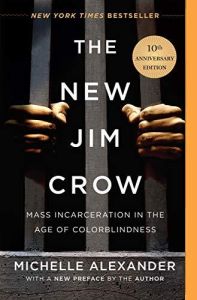Join getAbstract to access the summary!

Join getAbstract to access the summary!
Michelle Alexander
The New Jim Crow
Mass Incarceration in the Age of Colorblindness
The New Press, 2020
What's inside?
An acclaimed legal scholar probes America’s criminalization of people of color.
Recommendation
Michelle Alexander’s 2010 indictment of America’s penal system helped spark a new generation of civil rights and prison reform/abolition activism including the Black Lives Matter movement. It influenced the work of countless racial justice activists and educators. Alexander, a civil rights attorney and legal scholar, makes a compelling case that, far from having transcended race, the US criminal justice system has deliberately consigned millions of people of color to a new form of discrimination, disenfranchisement and stigma.
Summary
About the Author
Michelle Alexander is a civil rights lawyer, advocate and legal scholar. A graduate of Stanford Law School and Vanderbilt University, she teaches at Union Theological Seminary and writes for The New York Times.


















Comment on this summary